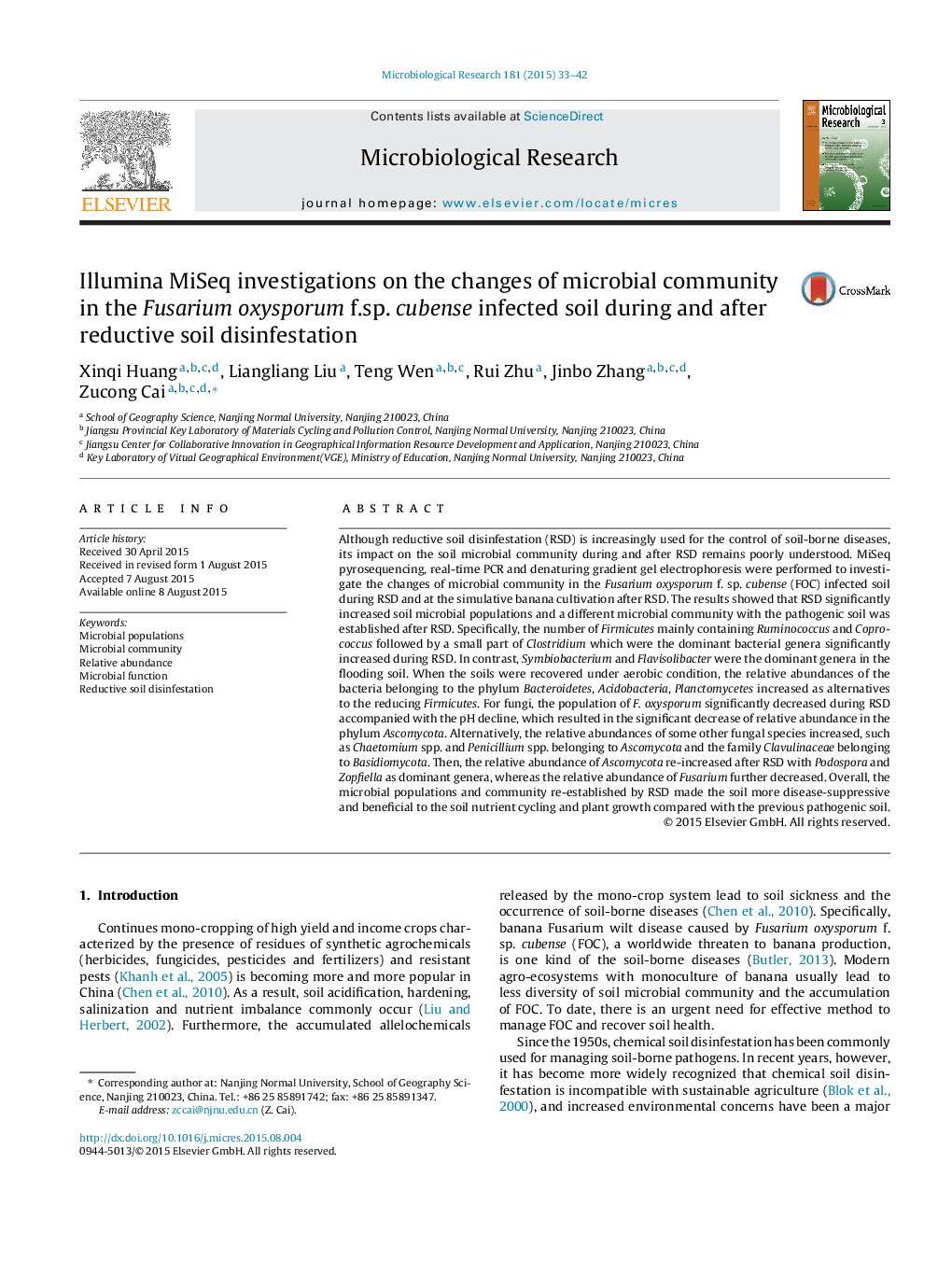| کد مقاله | کد نشریه | سال انتشار | مقاله انگلیسی | نسخه تمام متن |
|---|---|---|---|---|
| 2092953 | 1545991 | 2015 | 10 صفحه PDF | دانلود رایگان |

Although reductive soil disinfestation (RSD) is increasingly used for the control of soil-borne diseases, its impact on the soil microbial community during and after RSD remains poorly understood. MiSeq pyrosequencing, real-time PCR and denaturing gradient gel electrophoresis were performed to investigate the changes of microbial community in the Fusarium oxysporum f. sp. cubense (FOC) infected soil during RSD and at the simulative banana cultivation after RSD. The results showed that RSD significantly increased soil microbial populations and a different microbial community with the pathogenic soil was established after RSD. Specifically, the number of Firmicutes mainly containing Ruminococcus and Coprococcus followed by a small part of Clostridium which were the dominant bacterial genera significantly increased during RSD. In contrast, Symbiobacterium and Flavisolibacter were the dominant genera in the flooding soil. When the soils were recovered under aerobic condition, the relative abundances of the bacteria belonging to the phylum Bacteroidetes, Acidobacteria, Planctomycetes increased as alternatives to the reducing Firmicutes. For fungi, the population of F. oxysporum significantly decreased during RSD accompanied with the pH decline, which resulted in the significant decrease of relative abundance in the phylum Ascomycota. Alternatively, the relative abundances of some other fungal species increased, such as Chaetomium spp. and Penicillium spp. belonging to Ascomycota and the family Clavulinaceae belonging to Basidiomycota. Then, the relative abundance of Ascomycota re-increased after RSD with Podospora and Zopfiella as dominant genera, whereas the relative abundance of Fusarium further decreased. Overall, the microbial populations and community re-established by RSD made the soil more disease-suppressive and beneficial to the soil nutrient cycling and plant growth compared with the previous pathogenic soil.
Figure optionsDownload as PowerPoint slide
Journal: Microbiological Research - Volume 181, December 2015, Pages 33–42